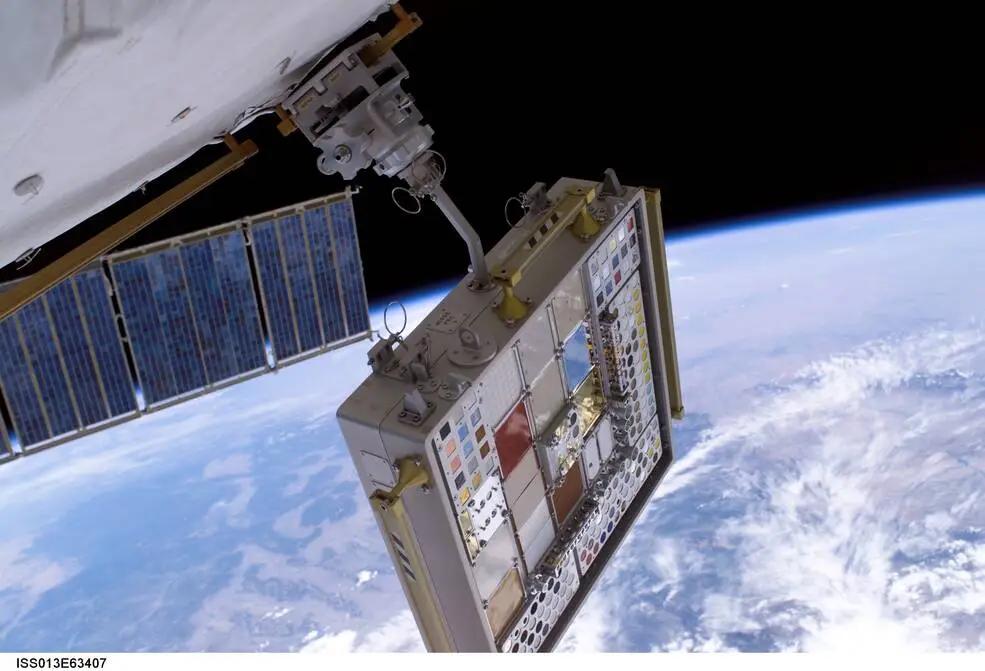Note: This is an answer was originally written to answer an earlier version of the question: "What kinds of activities, experiments, and procedures done on the ISS must be done in a vacuum or within atmospheric isolation chambers that can be vented directly into space?" It has since been adapted.
Broadly speaking the reasons for isolating an experiment are: a) To prevent the environment from contaminating the experiment, and b) To protect the experiment from contaminating the environment. Performing procedures either outside of the station or within chambers that can be vented to space can help to prevent either kind of cross-contamination.
Preventing Experiment to Environment Contamination
The ISS supports ExPRESS Racks which support a Vacuum Exhaust System. This feature can be used to simply vent contaminants from the experiment out into space. But it also makes these chambers ideal for experiments that require both microgravity and exposure to vacuum, but where:
- Direct exposure to space radiation is less important,
- Where temperature control is important,
- Where it would be best not to allow any parts of the experiment drift away (3D printing, or crystal growth experiments), or
- Where it is important for astronauts to be able to frequently access the experiment
For example, Mitsubishi is developing an antenna that can be 3D printed in space; however, the plastic they use needs sunlight to cure so their technology might not be a good fit for the ExPRESS Racks.
 Reference: Slide 21
Reference: Slide 21
There are several experiments (see: Scientific research on the International Space Station) where it would seem advisable to prevent contamination of the crew's air supply or cross-contamination of other experiments. For example, the Fluids and Combustion Facility, The Ryutai Fluids Experiment Rack, and several of the biological experiments.

Preventing Environment to Experiment Contamination
In some cases, the experiment needs to be protected from being contaminated by the environment inside the ISS. Many of these kinds of experiments are quite interesting in their own right.
The broader question of how effective these procedures are is important as well. For example, if return samples from Mars were to be analyzed on the ISS, and evidence of abiogenic life were detected in these samples, researchers would want to be extremely confident that the ISS's stringent procedures for preventing sample contamination rule out any possibility of their being an embarrassing error in their findings.
According to this Sept 2023 NASA article the ISS National Lab sponsors a series of investigations called the Materials International Space Station Experiment (MISSE) to analyze how exposure to space affects specific materials and components. These experiments test coatings, a lunar regolith or dust simulant, and other materials with potential for use in future spacecraft, spacesuits, and other components needed for research and space exploration including imaging sensors, window coatings, 3D printed polymers, and electronic components. Many of the experiments specific goals are to test the durability in space of polymers, composites, thermal protection systems, photovoltaic technologies and radiation shielding materials.
MISSE Sample Carriers (MSCs) are sent out through the station’s JEM airlock and then the robotic arm installs them onto the facility. Afterward, materials are retrieved and returned to Earth for post flight analysis. In some cases, to prevent these samples from becoming contaminated by, for example, moisture in the air, it might be essential for them to be sealed inside an airtight container before they are brought back inside the ISS. This will, of course, depend on the nature of the experiment.
 View of samples for MISSE-3 and 4 installed on the exterior of the space station (Credit NASA)
View of samples for MISSE-3 and 4 installed on the exterior of the space station (Credit NASA)
You can learn about the specifics of many of the MISSE missions on NASA's website:
The ESA (European Space Agency) EXPOSE-R2 facility is another platform used to test samples in space. ESA investigations BOSS and BIOMEX used it to determine whether microorganisms could repair DNA damage resulting from space exposure.
JAXA (Japan Aerospace Exploration Agency) exposed microbes and organic compounds to space to test the “panspermia” hypothesis (the theory that the seeds of life could travel among celestial bodies) in a series of experiments called Tampopo (the Japanese word for dandelion).
It is important to keep experiments from fouling the air or infecting the crew, especially as the crew themselves are being studied to learn more about how space affects human physiology. But we can also learn how to improve containment by studying (and publishing) information about experiments that were affected by contamination in the environment to experiment direction.





